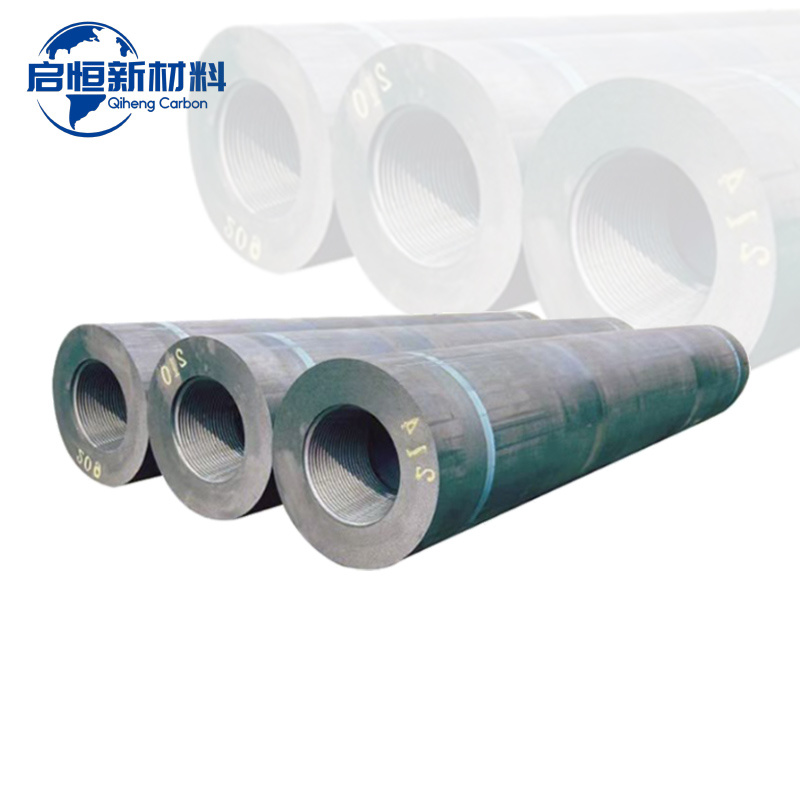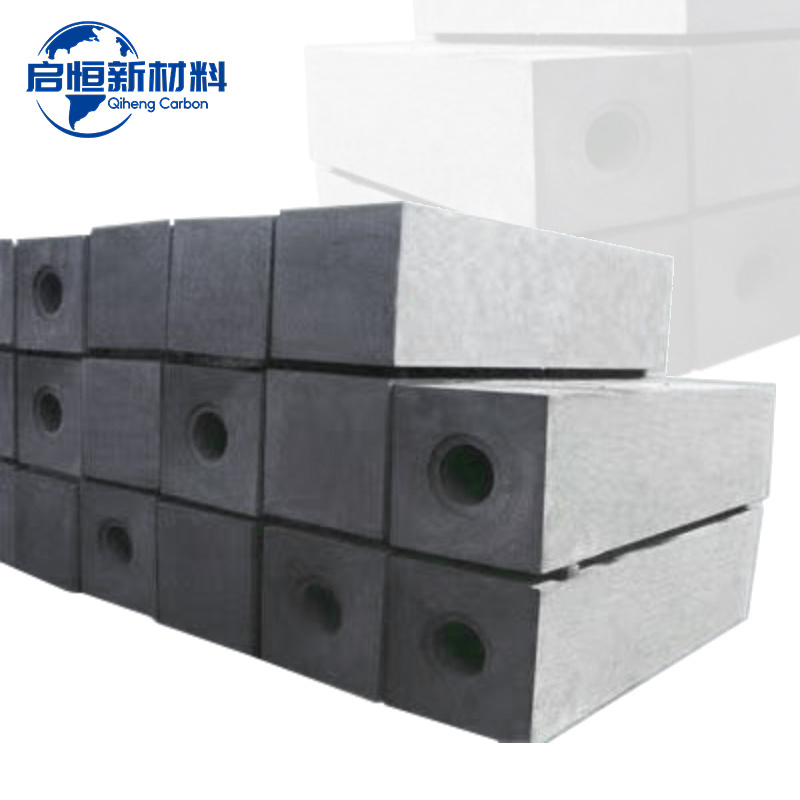The Impact of Carbon Graphite Electrodes on Metal Quality and Performance
Summary:
The Impact of Carbon Graphite Electrodes on Metal Quality and Performance
Table of Contents
Introduction to Carbon Graphite Electrodes
What Are Carbon Graphite Electrodes?
Importance of Carbon Graphite Electrodes in Metallurgy
The Role of Carbon Graphite Electrodes in Electric Arc Furnaces
Impact on Metal Quality and Performance
Enhancing Energy Efficiency with Carbon Grap

The Impact of Carbon Graphite Electrodes on Metal Quality and Performance
Table of Contents
- Introduction to Carbon Graphite Electrodes
- What Are Carbon Graphite Electrodes?
- Importance of Carbon Graphite Electrodes in Metallurgy
- The Role of Carbon Graphite Electrodes in Electric Arc Furnaces
- Impact on Metal Quality and Performance
- Enhancing Energy Efficiency with Carbon Graphite Electrodes
- Future Developments in Carbon Graphite Technology
- Conclusion
- Frequently Asked Questions
Introduction to Carbon Graphite Electrodes
The metal industry continually seeks innovative solutions to enhance the quality and performance of its products. One such advancement is the utilization of carbon graphite electrodes. These electrodes have established themselves as essential components in the production of high-quality metals, particularly within electric arc furnaces (EAFs).
In this article, we delve into the profound impact that carbon graphite electrodes have on metal quality and performance, examining their characteristics, importance in metallurgy, and the future of this technology.
What Are Carbon Graphite Electrodes?
Carbon graphite electrodes are conductive materials made primarily from petroleum coke and pitch. They are designed to withstand the intense heat generated in metallurgical processes, particularly during the melting of scrap steel and other metals in electric arc furnaces. The unique properties of carbon graphite—such as its high thermal conductivity, resistance to thermal shock, and overall durability—make it a preferred choice in modern metallurgy.
The Composition of Carbon Graphite Electrodes
The composition of carbon graphite electrodes typically includes:
- **Petroleum Coke**: Serves as the primary carbon source, contributing to the electrode's mechanical strength.
- **Pitch**: Acts as a binder, aiding in the formation and structure of the electrode.
- **Additives**: Various additives can be included to enhance specific properties, such as electrical conductivity and thermal resistance.
Types of Carbon Graphite Electrodes
The types of carbon graphite electrodes vary based on their application and manufacturing process:
- **Regular Power (RP) Electrodes**: Suitable for general applications in EAFs.
- **High Power (HP) Electrodes**: Designed for operations requiring higher electrical efficiency.
- **Ultra High Power (UHP) Electrodes**: Engineered for extreme applications that demand maximum performance.
Importance of Carbon Graphite Electrodes in Metallurgy
Carbon graphite electrodes play a fundamental role in metallurgical processes, particularly in electric arc furnaces. Their significance can be summarized as follows:
High Electrical Conductivity
These electrodes exhibit superior electrical conductivity, allowing for efficient energy transfer during metal melting. This efficiency is crucial for operations that seek to minimize energy consumption and maximize productivity.
Thermal Stability and Resistance
Carbon graphite electrodes are well-known for their ability to withstand high temperatures without degrading. This thermal stability is vital in processes where consistent heat application is necessary for optimal metal properties.
Enhanced Metallurgical Reactions
The presence of carbon graphite electrodes facilitates various metallurgical reactions, including deoxidation, reduction, and alloying. These reactions significantly influence the quality and characteristics of the finished metal product.
The Role of Carbon Graphite Electrodes in Electric Arc Furnaces
Electric arc furnaces (EAFs) are pivotal in modern steelmaking, and carbon graphite electrodes are integral to their operation.
The electrodes serve as conduits for electrical energy, generating an arc that melts scrap metal and other charges within the furnace. The efficiency of this process directly correlates with the quality of the electrodes used, making it imperative to select high-quality carbon graphite electrodes for optimal performance.
Arc Stability and Energy Efficiency
The stability of the electric arc is critical for effective melting. High-quality carbon graphite electrodes contribute to arc stability, allowing for a consistent and efficient melting process. This stability not only enhances energy efficiency but also ensures a uniform temperature distribution within the furnace.
Reduction of Emissions
Utilizing carbon graphite electrodes can also lead to a reduction in harmful emissions during the melting process. By optimizing the melting conditions and improving energy efficiency, manufacturers can significantly lower their environmental impact.
Impact on Metal Quality and Performance
The quality of metals produced in electric arc furnaces is significantly influenced by the performance of carbon graphite electrodes.
Improved Metal Composition
Carbon graphite electrodes facilitate precise control over the chemical composition of the molten metal. By enabling the introduction of controlled amounts of carbon, they help achieve desired alloy characteristics, enhancing overall metal quality.
Enhanced Mechanical Properties
The use of quality carbon graphite electrodes results in metals with superior mechanical properties. These enhanced characteristics, including tensile strength, ductility, and toughness, are crucial for meeting industry standards and customer expectations.
Reduction of Defects
Employing high-quality electrodes can also lead to a decrease in defects within the final metal product. By ensuring stable melting conditions and optimal chemical compositions, manufacturers can produce metals with fewer impurities and structural inconsistencies.
Enhancing Energy Efficiency with Carbon Graphite Electrodes
Energy efficiency is a critical consideration in modern metallurgy, impacting both production costs and environmental sustainability. Carbon graphite electrodes contribute significantly to energy efficiency through the following mechanisms:
Lower Energy Consumption
The high electrical conductivity of carbon graphite electrodes allows for reduced energy consumption during the melting process. This efficiency translates to lower operational costs for manufacturers, making it financially advantageous to use quality electrodes.
Optimized Melting Processes
By enabling precise control over the melting process, carbon graphite electrodes help optimize energy use. This optimization reduces the overall carbon footprint of manufacturing operations, aligning with global sustainability goals.
Future Developments in Carbon Graphite Technology
As technology advances, the development of carbon graphite electrodes is poised for further innovation. Emerging trends include:
Graphene-Enhanced Electrodes
Research into graphene-enhanced carbon graphite electrodes promises to improve electrical conductivity and thermal stability further. These advancements could lead to even greater efficiencies in metal production.
Recycling and Sustainability Initiatives
With increasing emphasis on sustainability, manufacturers are exploring ways to recycle carbon graphite electrodes. This initiative not only reduces waste but also promotes a circular economy within the metallurgy sector.
Smart Manufacturing Integration
The integration of smart manufacturing technologies, including AI and IoT, may enhance the performance and monitoring of carbon graphite electrodes. Predictive analytics could optimize electrode usage, improving efficiencies and metal quality.
Conclusion
The impact of carbon graphite electrodes on metal quality and performance is profound and multifaceted. By enhancing electrical conductivity, thermal stability, and overall melting efficiency, these electrodes play a critical role in modern metallurgy.
As the industry continues to evolve, the development of advanced carbon graphite technologies and sustainable practices will shape the future of metal production. For manufacturers aiming to produce high-quality metals, investing in superior carbon graphite electrodes is not merely advantageous; it is essential for success.
Frequently Asked Questions
1. What are carbon graphite electrodes used for?
Carbon graphite electrodes are primarily used in electric arc furnaces for melting metals, particularly in steelmaking.
2. How do carbon graphite electrodes affect metal quality?
These electrodes enhance the electrical conductivity, thermal stability, and chemical composition control during the melting process, leading to improved metal quality.
3. Are there different types of carbon graphite electrodes?
Yes, carbon graphite electrodes come in various types, including regular power (RP), high power (HP), and ultra-high power (UHP) electrodes, each suited for different applications.
4. How can the use of carbon graphite electrodes improve energy efficiency?
Their high electrical conductivity allows for reduced energy consumption during the melting process, contributing to lower operational costs and a smaller carbon footprint.
5. What future developments are expected in carbon graphite electrode technology?
Future developments may include graphene-enhanced electrodes, recycling initiatives, and smart manufacturing integration for further optimization and performance enhancements.
Focus On Hot Spots
RP Graphite Electrodes: Transforming Conductivity in Metallurgical Processes
RP Graphite Electrodes: Enhancing Conductivity in Metallurgical Applications
Table of Contents
1. Introduction to RP Graphite Electrodes
2. Understanding Graphite and Its Properties
3. The Role of RP Graphite Electrodes in Metallurgy
4. Benefits of Using RP Graphite Electrodes
5. The Manufacturing Process of RP Graphite Electrodes
6. Applications of RP Graphite Electrodes
The Essential Guide to Graphite Blocks in Metallurgy and Energy Industries
Graphite blocks are pivotal materials in the metallurgy and energy industries, particularly within the non-metallic mineral products sector. These blocks, made from natural or synthetic graphite, possess unique properties that make them suitable for a wide range of applications. One of the most notable characteristics of graphite is its excellent thermal and electrical conductivity. This property








